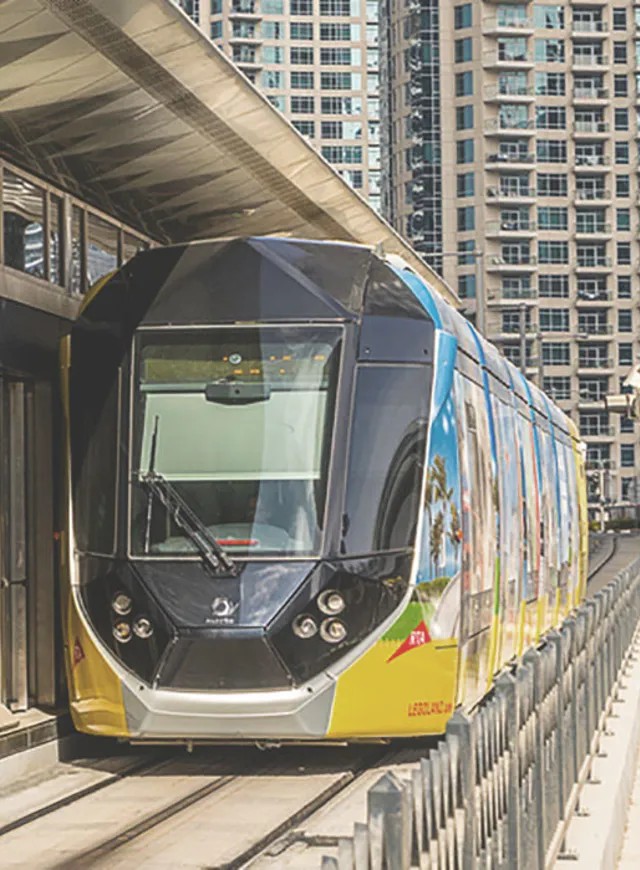
Dubai Metro and Tram
Download nowCase study - Dubai metro and tram
Ricardo has a long and established history of providing technical support for Dubai’s integrated transport network, including its driverless metro system.
We were the Independent Safety Assessor for the construction of Dubai Metro's Red and Green Lines, the first urban rail systems on the Arabian Peninsula. We then fulfilled the role for the city's new street-level tram system.
Challenge
First appointed in 2006, it was our responsibility to assure the safety of passengers, staff and the public through safety audits of the design, manufacture, installation and testing documentation for the engineering systems, as well as its operating safety procedures.
With ambient temperatures ranging from +1°C to +52°C, winds of sand and dust reaching speeds of 160km/h and a corrosive atmosphere containing high levels of salt, the city and its environs presented one of the most hostile environments in which such a system had ever been built. As such, the client prioritised the highest standards of safety throughout construction and operation.
In 2009, whilst still supporting the construction of the metro, we were appointed to provide similar safety oversight for the development of the new tram system that would provide 'feeder' services to the metro stations.
Approach
For both the metro and tramway, our role was to provide objective, impartial assessments that each whole system - including rolling stock, signalling, communications, power supply and civil structures - was being developed to its specifications and would meet appropriate safety and RAM performance standards.
To meet these wide-ranging objectives, our assessors were given full access to all aspects of construction, with the freedom to perform independent risk-based assessments through a mix of site inspections, documentation reviews and stakeholder review forums.
Results
The first section of the Red Line opened to passenger service in September 2009 with the full 29 station route completed in 2010.
The first 18 stations of the Green Line opened in 2011, with an additional two stations following three years later. Combined, the two lines extend for 75km across a mix of underground and elevated sections with both routes operating as fully automated driverless systems (GoA4) with air-conditioned cars and platform screen doors at every station.
By 2019, the lines were carrying more than 200m passenger journeys a year with a punctuality rate of 99.69%, believed to be the highest rate of any driverless metro in the world.
The Dubai Tram followed in 2014 and was one of the first to be powered by a ground-based electric supply (activated when the tram is directly above the rail). It is also unique for using platform screen doors at each station. In its first five years of operation the system carried an average of 5.5m passenger journeys a year.
Recommendations
An Independent Safety Assessment (ISA) is a service undertaken by a third party to confirm that a product, system or entire railway meets recognised industry, legal and regulatory standards that relate to safety.
It can encompass the safety assessment and audit of any design, manufacture, installation, testing and safety documentation for the engineering systems, and extend to any procedures, preparations and safety policies in place ahead of a railway's entry into service or a product's release to the market.
Appointing an ISA demonstrates that your business is committed to operating in a safe, sustainable and efficient manner.



